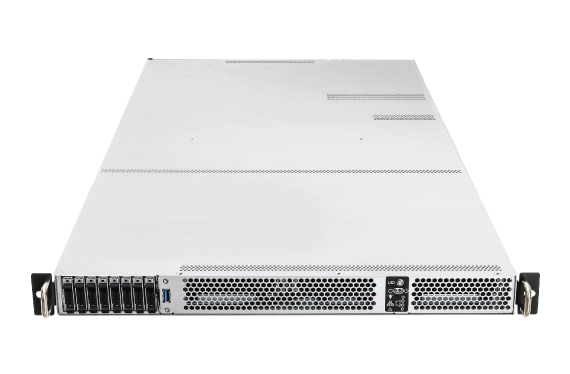
NVIDIA L40S GPU: The “Premier Platform for Gen AI (and more)” Offers Major Advantages
Heralded as the “premier platform for AI” and the “most powerful universal GPU for the data center” the new NVIDIA L40S available now inside the BOXX RAXX P1G workstation module is indeed a GPU milestone. Based on the NVIDIA Ada Lovelace architecture, the L40S delivers groundbreaking multi-workload acceleration for large language model (LLM) inference and training, as well as graphics and video applications. The 1U rack mounted RAXX P1G can support up to four of the new GPUs.
In addition to the computing power needed to run traditional AI applications like machine learning, deep learning, etc., the emergence of generative AI has created new opportunities in science, engineering, and creative workflows. However, in order to take advantage of AI, labs, firms, studios, and other organizations need more compute resources at a larger scale. In other words, for a constantly increasing set of complex and diverse workloads, the data centers of today (and tomorrow) require universal solutions that provide accelerated compute, graphics, and video.
Let’s start with compute. AI models have become increasingly popular (as well as complex) thanks to chatbots and text-to-image applications built on top of large language models like ChatGPT and generative AI diffusion models. Inside the RAXX P1G, the NVIDIA L40S GPU’s fourth-generation Tensor Cores, Transformer Engine, and new FP8 data format enable 1.2X more generative AI performance than the previous gen NVIDIA A100 Tensor Core GPU. As for inference and training, the L40S offers up to 1.4X more inference performance.
 If you’re interested in the RAXX P1G to accelerate simulation and physics workloads, the new L40S includes 18,176 NVIDIA Ada Lovelace GPU architecture CUDA cores providing nearly 5X the single-precision floating-point (FP32) performance of an NVIDIA A100 GPU.
If you’re interested in the RAXX P1G to accelerate simulation and physics workloads, the new L40S includes 18,176 NVIDIA Ada Lovelace GPU architecture CUDA cores providing nearly 5X the single-precision floating-point (FP32) performance of an NVIDIA A100 GPU.
In addition to AI, the RAXX P1G workstation module is purpose-built to dramatically accelerate GPU rendering from look development to final frame rendering, enabling more refined visuals in less time. With that in mind, let’s get graphic, or rather, let’s discuss the graphics capabilities of this system’s new GPUs. The NVIDIA L40S features142 third-generation RT Cores, as well as an industry-leading 48GB of GDDR6 memory.
So what’s the performance increase over the previous Ampere architecture?
How about twice the real-time ray-tracing performance to support high-performance ray tracing of complex geometry and the creation of highly detailed, photorealistic models and scenes? For creative content found in media & entertainment workloads, the advantages include real-time, full-fidelity, interactive rendering, 3D design, video streaming, and virtual production.
As they say in the infomercials, “That’s not all.” The L40S also features NVIDIA DLSS 3, a frame-generation technology that relies on deep learning and hardware innovations within the Ada Lovelace architecture including 4th gen Tensor Cores and a
new NVIDIA Optical Flow Accelerator to ensure faster rendering and smoother frame rates.
The inclusion of up to four NVIDIA L40S GPUs is a major upgrade to the RAXX P1G, making it an ideal choice for AI workloads while significantly improving its capabilities in media & entertainment. But that’s just the first blog in this series. Be sure to look for the next entry where we’ll discuss actual use cases for the RAXX P1G now available with NVIDIA L40S GPUs.


%25e2%2580%259d-offers-major-advantages&_biz_t=1752251025576&_biz_i=Hardware%20Category%20%7C%20BOXX%20Technologies&_biz_n=0&rnd=926208&cdn_o=a&_biz_z=1752251025683)
%25e2%2580%259d-offers-major-advantages&_biz_t=1752251025686&_biz_i=Hardware%20Category%20%7C%20BOXX%20Technologies&rnd=148056&cdn_o=a&_biz_z=1752251025686)